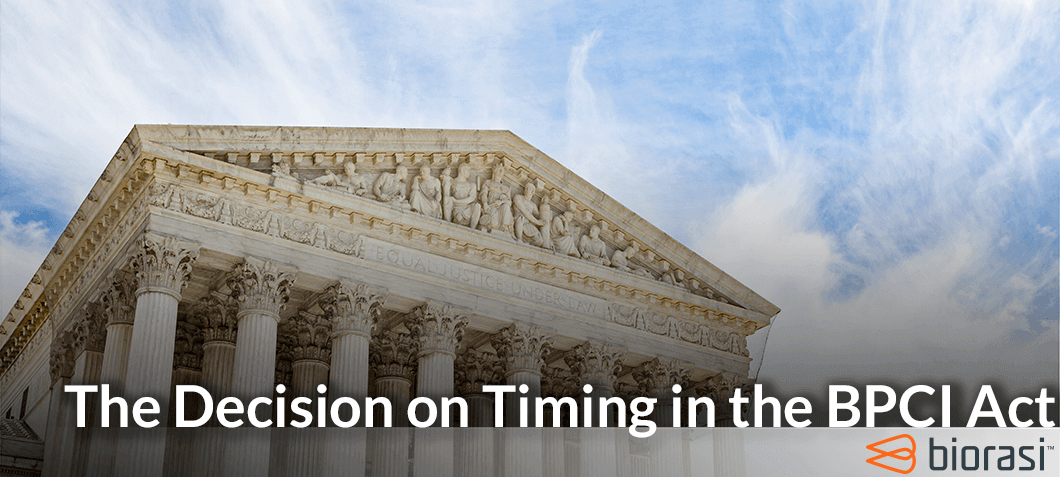Resource • Article
The Decision on Timing in the BPCI Act

This week, the path to market for biosimilar developers cleared up just a bit. The Supreme Court made a final decision in the three-year lawsuit between Amgen and Sandoz that sets a precedent regarding the interpretation of some widely-contested language in the BPCI Act. The language in question referred to the ‘patent dance’ that should begin when a biosimilar applicant receives FDA approval for their product. The concept of the ‘patent dance’ was intended to take the needs of biosimilar and originator companies in a dispute into account by requiring the biosimilar applicant to disclose details of their application and process for manufacturing to the originator at least 180 days before marketing the drug. The issue in question is whether the notice from the biosimilar manufacturer to the originator is mandatory and whether it must come before or after the biosimilar is approved.
This is what first led Amgen to sue Sandoz in 2014 for patent infringement. Sandoz sent a letter to Amgen stating that the FDA accepted its application for Zarxio, that they would not participate in the patent dance and that the letter served as the start of its 180-notice. Amgen then filed their patent infringement suit. Last year, the Federal Circuit Court ruled last year that the 180-day provision is mandatory, and that notice can only be given after FDA approval, however this led to the addition question of patent extension as this 180 days after FDA approval effectively extends the originator biological’s exclusivity period to 12 years 6 months.
The landmark decision by the Supreme Court is that the applicant may provide notice either before or after receiving FDA approval. This has major implications for how soon biosimilar companies can provide the submission package to the originator companies and in turn have their molecule available for marketing in the US, allowing more attainable options for life-changing medications for physicians and patients in the US.